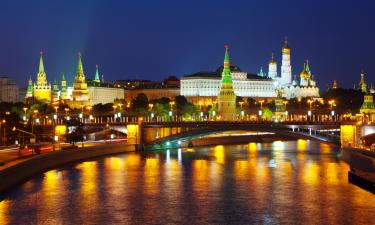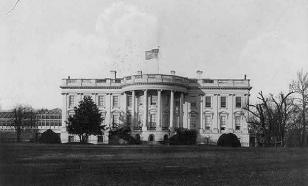Ukraine crisis development confirms destruction of NATO bunker
Neither Russian nor American authorities say anything about the missile attack on the Lviv region of Ukraine that took place on March 9. However, one can see consequences of that attack in NATO's changing policy.
Reports about the Kinzhal missile strike on a NATO bunker appeared in Ukrainian Telegram channels and in a little-known Greek publication. Neither the Russian Defense Ministry nor the Pentagon commented on the event.
Hypersonic Kinzhal missiles could not but strike the target as the missiles are invulnerable to all air defences. This is a fact that even the Pentagon admits.
Secondly, the Kinzhal missiles were used to strike a very important target located deep under the ground. Reportedly, the target was located in Lviv in Western Ukraine — a bunker of the Armed Forces of Ukraine, where NATO specialists also worked. The bunker was reportedly 120 meters under the ground.
The Kremlin had to have good reasons to conduct such an attack. One of those reasons was a terrorist attack in Russia's Bryansk region on March 2, when a civilian was killed and a boy was wounded.
It was a terrorist act, because the mission of a group of Ukrainian militants under the guise of "the Russian liberation army" had no military significance. Most likely, secret services of Ukraine, the USA and possibly the UK were involved in the operation. More importantly, though, it was the first terrorist attack on Russia's "old" territories. That was already an existential threat, and Russia had to respond.
The answer came in the form of the Kinzhal missile strike, in which as many as 160 NATO officers were reportedly annihilated in the bunker.
NATO had only one adequate response left — a nuclear one
If NATO recognised those losses, the alliance would have to take adequate measures in response. NATO could strike a Russian control center, for example, in the Kherson region. However, this would need to be a tactical nuclear strike from Europe, because NATO does not have an elusive hypersonic weapon like Russia's.
The tests of such a missile ended with a failure in March. It just so happens that Moscow has long had a wide range of hypersonic weapons and is working on its new generation, whereas the Pentagon is only trying to succeed in conducting stable flights at supersonic speeds.
After March 9, Washington faced a dilemma:
- either raise the level of conflict with Russia to a nuclear one
- or look for another way out and freeze the conflict.
As follows from events that took place afterwards, the second option was chosen, as the goal of the war for the Americans is not to defeat the Russian Federation, but to enable their bankers to invest and derive enormous profits from the restoration of Ukraine. Of course, Russia would have to leave it with a pro-Western government for the purpose.
Apparently, US military officials feared that some people in US Congress would insist on a nuclear strike on Russia. This is another reason for US media to sweep the aftermath of the Kinzhal missile strike under the carpet.
How the conflict in Ukraine is going to be frozen
Further events make a logical chain.
In March and April, the number of reports about the poor state of affairs within the ranks of the Armed Forces of Ukraine tripled in Western media. Some person in red shorts emerged who leaked intelligence data describing the collapse of the Armed Forces of Ukraine.
They also raised the subject about the need for negotiations between Kyiv and Moscow with territorial concessions involved.
French President Emmanuel Macron went to China (because Xi Jinping does not want to meet with Anthony Blinken nor does he take calls from Joe Biden) where he joined the Beijing peace plan.
The "corridors of solidarity" for the export of Ukrainian grain through Europe were urgently abolished, which deprived Kyiv of budget revenues. Noteworthy, it was Warsaw that initiated the restriction even though Poland was burning with the desire to create a confederation with Ukraine. This idea has now been put to rest.
They even talked about the physical elimination of Zelensky.
Jens Stoltenberg's visit to Kyiv was the icing on the cake. While Stoltenberg was in Kyiv, The Washington Post published an article reproaching Zelensky for the situation in Bakhmut. The US allegedly warned him about it, but now he can only blame himself. It appears that Stoltenberg brought the last warning to Zelensky — negotiate with Moscow.
Western bankers should be allowed to make profits
In the near future, probably with a different leadership in Kyiv, Washington will agree to all of Moscow's demands on the issue of Ukraine in terms of territorial concessions. In return, the USA will take part in the economic restoration of Ukraine. Of course, the plan may not materialise, and Washington will be left empty-handed. In this case, it will be difficult to explain it to US tax-payers what for the Ukrainian crisis actually happened.
One may wonder why the Russian Defence Ministry does not say a word about the destruction of the NATO bunker in Lviv. It appears that the reason is the same: Russia does not need an escalation of the conflict with the United States either.
Subscribe to Pravda.Ru Telegram channel, Facebook, RSS!



